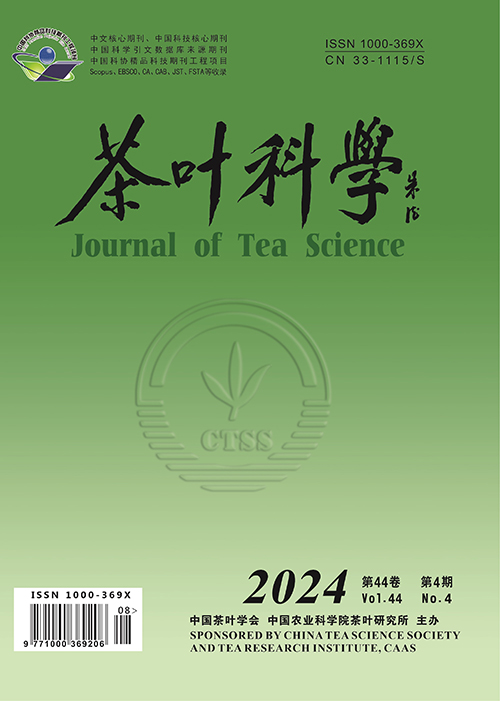Quantitative estimation of β-glutamylethylamide in commercially available made teas [ Camellia sinensis (L.) O. Kuntze, Theaceae] in Kenya
引用次数: 1
Abstract
A study was carried out to quantitatively estimate the L-theanine content in 19 teas commercially available in the Kenyan market by High Performance Liquid Chromatography (HPLC). The test tea samples analyzed were green (n = 4), black (n = 8) and flavored (n = 7) teas from different origins viz., Kenya (n = 4), Uganda (n = 2), Tanzania (n = 5), Rwanda (n = 4), Cameroon (n = 1) and Sri-Lanka (n = 2) commercially available in the Kenyan market. The estimated Limit of Detection (LOD) of the current method was 0.01% L-theanine. The L-theanine content ranged from below the detection limit (<0.01% L-theanine) to 1.60% L-theanine on a dry weight (d.w) basis. Statistically significant differences (p < 0.05) were observed in the L-theanine contents of black, green and flavoured teas. Rwandan green tea contained the highest L-theanine content with 1.60% d.w. whereas six of the seven flavoured teas had very low theanine levels (<0.01%) that could not be quantified by the current method.市售茶中β-谷氨乙胺含量的定量分析[茶树]O. Kuntze,山茶科]产于肯尼亚
采用高效液相色谱法(HPLC)对肯尼亚市售的19种茶的l -茶氨酸含量进行了定量估计。所分析的测试茶样品是来自不同产地的绿茶(n = 4)、红茶(n = 8)和风味茶(n = 7),即肯尼亚(n = 4)、乌干达(n = 2)、坦桑尼亚(n = 5)、卢旺达(n = 4)、喀麦隆(n = 1)和斯里兰卡(n = 2),这些茶叶在肯尼亚市场上都可以买到。本方法的检出限(LOD)为0.01%。l -茶氨酸含量从低于检测限(<0.01% l -茶氨酸)到1.60% l -茶氨酸(干重)不等。黑茶、绿茶和风味茶的l -茶氨酸含量差异有统计学意义(p < 0.05)。卢旺达绿茶的l -茶氨酸含量最高,为1.60% d.w.,而7种风味茶中有6种茶氨酸含量非常低(<0.01%),无法用现行方法定量。
本文章由计算机程序翻译,如有差异,请以英文原文为准。
求助全文
约1分钟内获得全文
求助全文
来源期刊
CiteScore
1.50
自引率
0.00%
发文量
2558
期刊介绍:
The Journal of Tea Science was established in August 1964, approved by the Publicity Department, CCCPC. Its title was inscribed by Zhu De, the chairman of CCCPC. It was discontinued during the Cultural Revolution in 1966, and it was reissued in August 1984, approved by the State Scientific and Technological Commission.Academicians Chen Zongmao and Liu Zhonghuaof the Chinese Academy of Engineering served as the directors of the editorial board. The Journal of Tea Science is managed by the China Association for Science and Technology,sponsored by the China Tea Science Society and the Tea Research Institute of the Chinese Academy of Agricultural Sciences, and edited and published by the editorial office of the Journal of Tea Science. It is the only one of Chinese core journals in the field of tea science that is included in the core library of the Chinese Science Citation Database.Its Domestic Unified Serial Number is CN 33-1115/S, its International Standard Serial Number is ISSN 1000-369X and its International publication name code is CODEN-CHKEF4. At present, the Journal of Tea Science is a bimonthly publication, published in the middle of the month, with a book size of 16.

 求助内容:
求助内容: 应助结果提醒方式:
应助结果提醒方式:


